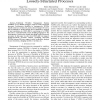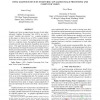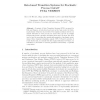1003 search results - page 79 / 201 » How to Parallelize Sequential Processes |
EDOC
2007
IEEE
14 years 3 months ago
2007
IEEE
—Traditional Workflow Management Systems (WFMSs) are not flexible enough to support loosely-structured processes. Furthermore, flexibility in contemporary WFMSs usually comes ...
ICMCS
2008
IEEE
14 years 3 months ago
2008
IEEE
Graphics and vision are approximate inverses of each other: ordinarily Graphics Processing Units (GPUs) are used to convert “numbers into pictures” (i.e. computer graphics). I...
GCC
2003
Springer
14 years 2 months ago
2003
Springer
A formal model called CoAuto (Cooperative Automaton) is proposed ibe and analyze cooperative processes. A basic CoAuto abstracts the behaviors of a single active entity. It separat...
PC
2010
13 years 7 months ago
2010
Graph component labelling, which is a subset of the general graph colouring problem, is a computationally expensive operation that is of importance in many applications and simula...
ICALP
2009
Springer
14 years 9 months ago
2009
Springer
A variant of Rate Transition Systems (RTS), proposed by Klin and Sassone, is introduced and used as the basic model for defining stochastic behaviour of processes. The transition r...



